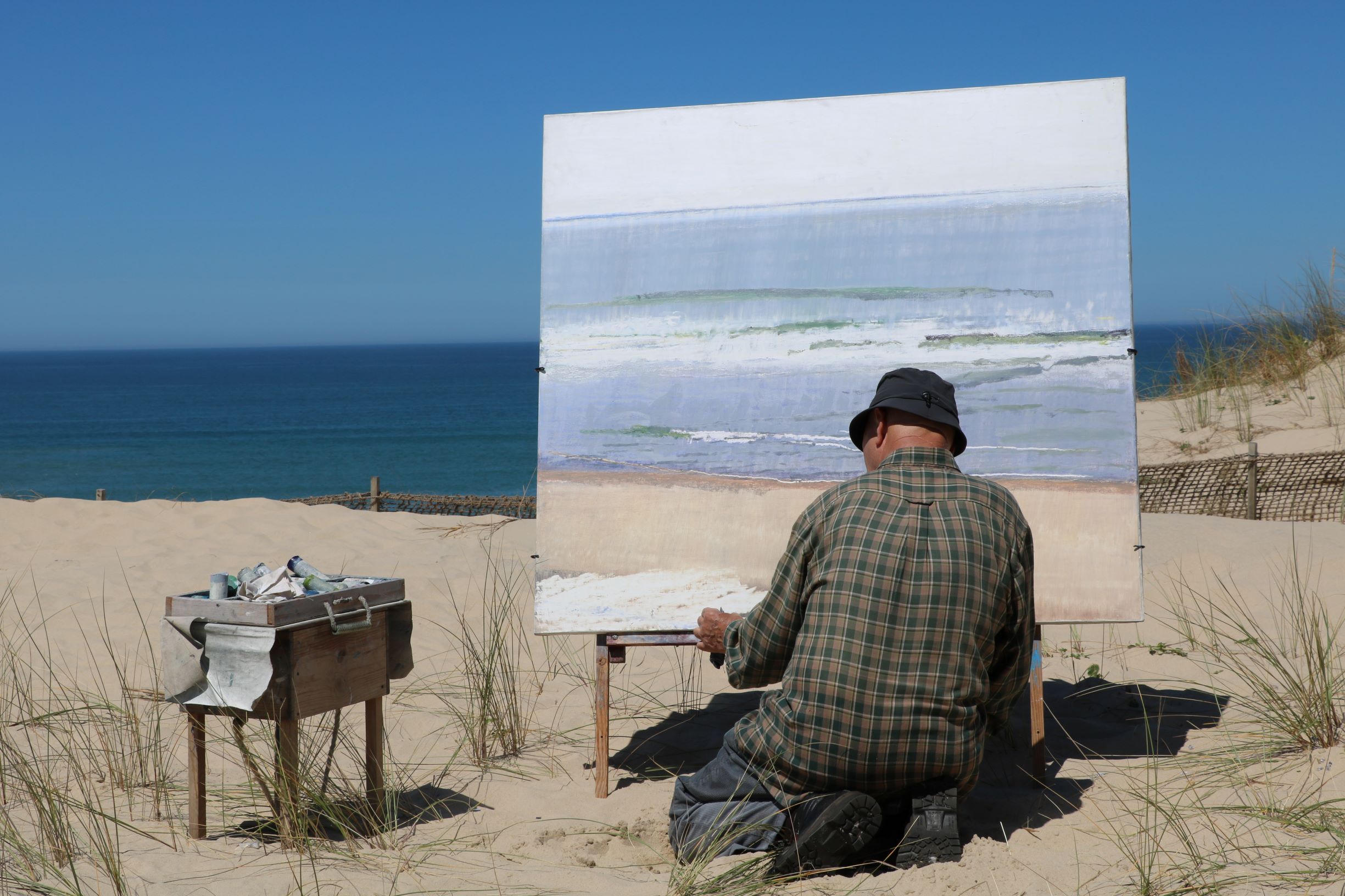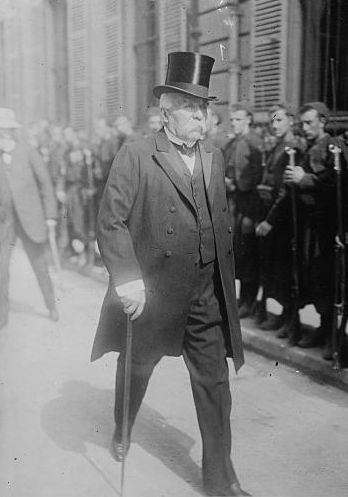|
Blanche Hoschedé Monet
Blanche Hoschedé Monet (10 November 1865 – 8 December 1947) was a French Painting, painter who was both the stepdaughter and the daughter-in-law of Claude Monet. Early life Ernest and Alice Hoschedé Blanche Hoschedé was born in Paris, the second daughter of Ernest Hoschedé and Alice Hoschedé. Ernest was a businessman, a department store magnate in Paris. He collected Impressionism, impressionist paintings''Street Singer'' Provenance Information. Museum of Fine Arts, Boston. Retrieved August 27, 2014. and was an important patron to Claude Monet early in his career. In 1876, Ernest commissioned Claude to paint decorative panels in the round drawing room in his residence, the ''château de Rottembourg'', in Montgeron. In 1877, Ernest went bankrupt and his art collection was auctio ... [...More Info...] [...Related Items...] OR: [Wikipedia] [Google] [Baidu] |
Claude Monet
Oscar-Claude Monet (, ; ; 14 November 1840 – 5 December 1926) was a French painter and founder of Impressionism painting who is seen as a key precursor to modernism, especially in his attempts to paint nature as he perceived it. During his long career, he was the most consistent and prolific practitioner of Impressionism's philosophy of expressing one's perceptions of nature, especially as applied to ''En plein air, ''plein air'''' (outdoor) landscape painting. The term "Impressionism" is derived from the title of his painting ''Impression, Sunrise, Impression, soleil levant'', which was exhibited in 1874 at the First Impressionist Exhibition, initiated by Monet and a number of like-minded artists as an alternative to the Salon (Paris), Salon. Monet was raised in Le Havre, Normandy, and became interested in the outdoors and drawing from an early age. Although his mother, Louise-Justine Aubrée Monet, supported his ambitions to be a painter, his father, Claude-Adolphe, disa ... [...More Info...] [...Related Items...] OR: [Wikipedia] [Google] [Baidu] |
En Plein Air
''En plein air'' (; French language, French for 'outdoors'), or plein-air painting, is the act of painting outdoors. This method contrasts with studio painting or academic rules that might create a predetermined look. The theory of 'En plein air' painting is credited to Pierre-Henri de Valenciennes (1750–1819), first expounded in a treatise titled ''Reflections and Advice to a Student on Painting, Particularly on Landscape'' (1800), where he developed the concept of landscape portraiture by which the artist paints directly onto canvas ''in situ'' within the landscape. It enabled the artist to better capture the changing details of weather and light. The invention of portable canvases and easels allowed the practice to develop, particularly in France, and in the early 1830s the Barbizon School of painting in natural light was highly influential. Amongst the most prominent features of this school were its tonal qualities, colour, loose brushwork, and softness of form. These wer ... [...More Info...] [...Related Items...] OR: [Wikipedia] [Google] [Baidu] |
Vendée
Vendée () is a department in the Pays de la Loire region in Western France, on the Atlantic coast. In 2019, it had a population of 685,442.Populations légales 2019: 85 Vendée INSEE Its is . History The area today called the Vendée was originally known as the ''Bas-Poitou'' and is part of the former province of Poitou. In the southeast corner, the village of[...More Info...] [...Related Items...] OR: [Wikipedia] [Google] [Baidu] |
Saint-Vincent-sur-Jard
Saint-Vincent-sur-Jard (, literally ''Saint-Vincent on Jard'') is a commune in the Vendée department in the Pays de la Loire region in western France. Georges Clemenceau, French Prime Minister during World War I, would spend his remaining years here after retiring from political life in 1920, up until his death in 1929. See also *Communes of the Vendée department The following is a list of the 253 communes of the Vendée department of France. The communes cooperate in the following intercommunalities (as of 2025):Communes of Vendée Populated coastal places in France {{Vendée-geo-stub ... [...More Info...] [...Related Items...] OR: [Wikipedia] [Google] [Baidu] |
Risle
The Risle (; less common: ''Rille'') is a long river in Normandy, left tributary of the Seine. The river begins in the Orne department west of L'Aigle, crosses the western part of the department of Eure flowing from south to north and out into the estuary of the Seine on the left bank near Berville-sur-Mer. Its upper valley is part of the Pays d'Ouche, its lower valley separates the regions of the Lieuvin and Roumois. The Risle is regarded as a coastal river. Fishing is common downstream at Pont-Audemer. The river and surrounding areas are parts of a protected Natura 2000 site called Risle, Guiel, Charentonne. On July 30, 2012, the Risle vanished in a ponor between La Ferrière-sur-Risle and La Houssaye. It runs underground for . Its only major tributary is the Charentonne. The Risle flows through the following departments and communes: *Orne: Sainte-Gauburge-Sainte-Colombe, L'Aigle *Eure Eure ( ; ; or ) is a department in the administrative region of Norma ... [...More Info...] [...Related Items...] OR: [Wikipedia] [Google] [Baidu] |
Populus
''Populus'' is a genus of 25–30 species of deciduous flowering plants in the family Salicaceae, native to most of the Northern Hemisphere. English names variously applied to different species include poplar (), aspen, and cottonwood. The western balsam poplar (Populus trichocarpa, ''P. trichocarpa'') was the first tree to have its full DNA code determined by DNA sequencing, in 2006. Description The genus has a large genetic diversity, and can grow from tall, with trunks up to in diameter. The Bark (botany), bark on young trees is smooth and white to greenish or dark gray, and often has conspicuous lenticels; on old trees, it remains smooth in some species, but becomes rough and deeply fissured in others. The shoots are stout, with (unlike in the related willows) the terminal bud present. The leaves are spirally arranged, and vary in shape from triangular to circular or (rarely) lobed, and with a long petiole (botany), petiole; in species in the sections ''Populus'' ... [...More Info...] [...Related Items...] OR: [Wikipedia] [Google] [Baidu] |
Pine
A pine is any conifer tree or shrub in the genus ''Pinus'' () of the family Pinaceae. ''Pinus'' is the sole genus in the subfamily Pinoideae. ''World Flora Online'' accepts 134 species-rank taxa (119 species and 15 nothospecies) of pines as current, with additional synonyms, and ''Plants of the World Online'' 126 species-rank taxa (113 species and 13 nothospecies), making it the largest genus among the conifers. The highest species diversity of pines is found in Mexico. Pines are widely species distribution, distributed in the Northern Hemisphere; they occupy large areas of boreal forest, but are found in many habitats, including the Mediterranean Basin, and dry tropical forests in southeast Asia and Central America. Wood from pine trees is one of the most extensively used types of timber, and some pines are widely used as Christmas trees. Description Pine trees are evergreen, coniferous resinous trees (or, rarely, shrubs) growing tall, with the majority of species reachin ... [...More Info...] [...Related Items...] OR: [Wikipedia] [Google] [Baidu] |
Impressionism
Impressionism was a 19th-century art movement characterized by visible brush strokes, open Composition (visual arts), composition, emphasis on accurate depiction of light in its changing qualities (often accentuating the effects of the passage of time), ordinary subject matter, unusual visual angles, and inclusion of movement as a crucial element of human perception and experience. Impressionism originated with a group of Paris-based artists whose independent exhibitions brought them to prominence during the 1870s and 1880s. The Impressionists faced harsh opposition from the conventional art community in France. The name of the style derives from the title of a Claude Monet work, ''Impression, soleil levant'' (''Impression, Sunrise''), which provoked the critic Louis Leroy to coin the term in a Satire, satirical 1874 review of the First Impressionist Exhibition published in the Parisian newspaper ''Le Charivari''. The development of Impressionism in the visual arts was soon foll ... [...More Info...] [...Related Items...] OR: [Wikipedia] [Google] [Baidu] |
Blanche Hoschedé Monet, Grainstack Or Haystack, 1889
Blanche may refer to: People *Blanche (singer), stage name of Belgian singer and songwriter Ellie Delvaux *Blanche (given name) * Blanche (surname) Places Australia * Blanche Harbor (South Australia), a bay on the east coast of Eyre Peninsula ** Blanche Harbor, South Australia, a locality on the east coast of Eyre Peninsula * Blanche Rock, Tasmania Haiti * Rivière Blanche (Artibonite), a river in Haiti * Rivière Blanche (Ouest), a river in Haiti United States * Blanch, North Carolina, formerly called Blanche * Blanche, Tennessee, census-designated place * Lake Blanche (Minnesota) Elsewhere * Rivière Blanche (Martinique), a river * Aiguille Blanche de Peuterey, a mountain near Mont Blanc * Blanche (Guinea), an island in the Îles de Los * Blanche Harbor, in the Solomon Islands * Blanche River (Lake Timiskaming), in Canada Other uses * , various Royal Navy ships * , an iron steamship * Blanche (Paris Métro) * Blanche (band), an alternative-country band * Blanche ... [...More Info...] [...Related Items...] OR: [Wikipedia] [Google] [Baidu] |
Georges Clemenceau
Georges Benjamin Clemenceau (28 September 1841 – 24 November 1929) was a French statesman who was Prime Minister of France from 1906 to 1909 and again from 1917 until 1920. A physician turned journalist, he played a central role in the politics of the French Third Republic, Third Republic, particularly amid the end of the First World War. He was a key figure of the Independent Radicals, advocating for the separation of church and state, as well as the amnesty of the Communards exiled to New Caledonia. After about 1,400,000 French soldiers were killed between the Schlieffen Plan, German invasion and Armistice of 11 November 1918, Armistice, he demanded a total victory over the German Empire. Clemenceau stood for reparations, a transfer of colonies, strict rules to prevent a rearming process, as well as the restitution of Alsace–Lorraine, which had been annexed to Germany in 1871. He achieved these goals through the Treaty of Versailles signed at the Paris Peace Conferen ... [...More Info...] [...Related Items...] OR: [Wikipedia] [Google] [Baidu] |
Rouen
Rouen (, ; or ) is a city on the River Seine, in northwestern France. It is in the prefecture of Regions of France, region of Normandy (administrative region), Normandy and the Departments of France, department of Seine-Maritime. Formerly one of the largest and most prosperous cities of medieval Europe, the population of the metropolitan area () is 702,945 (2018). People from Rouen are known as ''Rouennais''. Rouen was the seat of the Exchequer of Normandy during the Middle Ages. It was one of the capitals of the Anglo-Normans, Anglo-Norman and Angevin kings of England, Angevin dynasties, which ruled both England and large parts of modern France from the 11th to the 15th centuries. From the 13th century onwards, the city experienced a remarkable economic boom, thanks in particular to the development of textile factories and river trade. Claimed by both the French and the English during the Hundred Years' War, it was on its soil that Joan of Arc was tried and burned alive on 30 ... [...More Info...] [...Related Items...] OR: [Wikipedia] [Google] [Baidu] |
Antibes
Antibes (, , ; ) is a seaside city in the Alpes-Maritimes Departments of France, department in Southeastern France. It is located on the French Riviera between Cannes and Nice; its cape, the Cap d'Antibes, along with Cap Ferrat in Saint-Jean-Cap-Ferrat to the northeast, is one of the best known landforms in the area. The capes house the Hôtel du Cap, Hôtel du Cap-Eden-Roc and Grand-Hôtel du Cap-Ferrat respectively, widely considered two of the most exclusive hotels in the world.Chanial, Jean-Pierre"Cap-Eden-Roc, 100 ans de légende" ''Le Figaro'' , 11 June 2014. The town of Juan-les-Pins is in the commune of Antibes; the Sophia Antipolis technology park is northwest of it. In 2020, the commune had a population of 74,709, making it Alpes-Maritimes's second-most populated. History Origins Traces of occupation dating back to the early Iron Age have been foundPatrice Arcelin, Antibes (A.-M.). Chapelle du Saint-Esprit. In : Guyon (J.), Heijmans (M.) éd. – ''D’un monde à l� ... [...More Info...] [...Related Items...] OR: [Wikipedia] [Google] [Baidu] |






